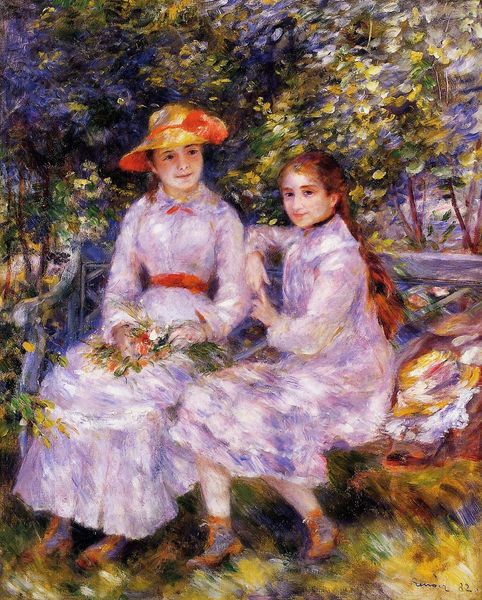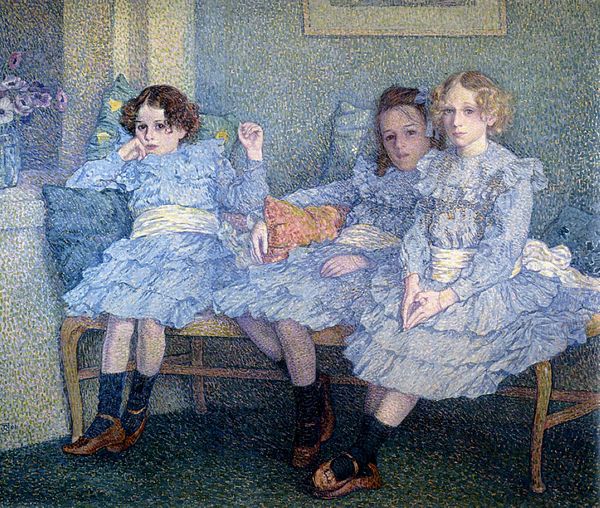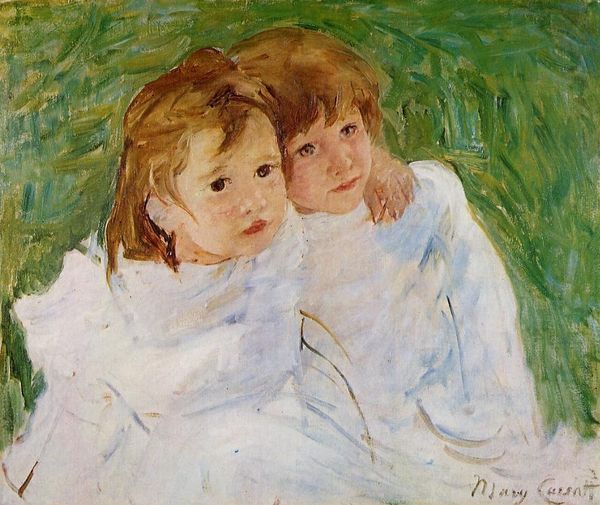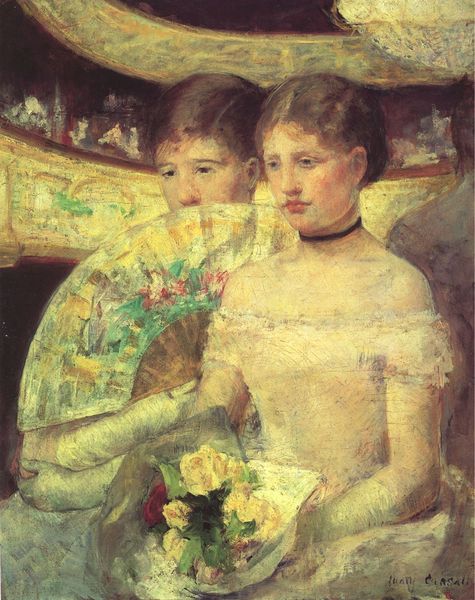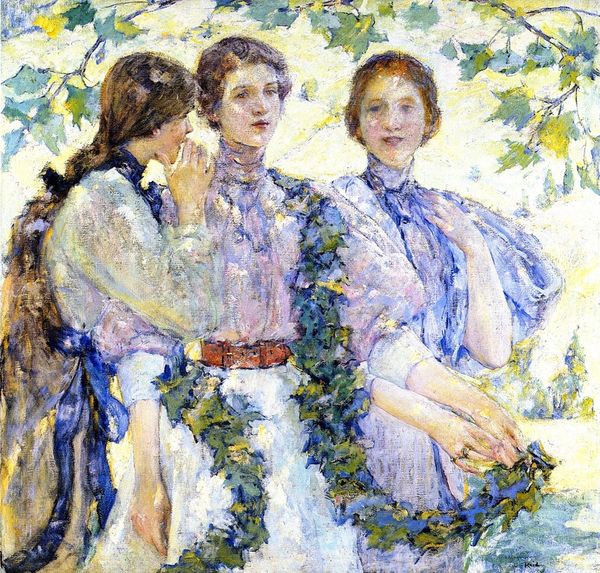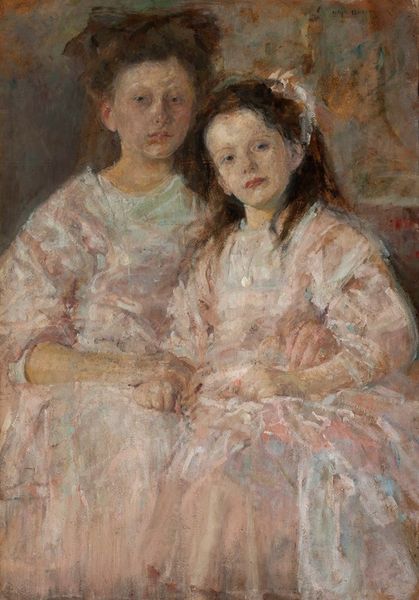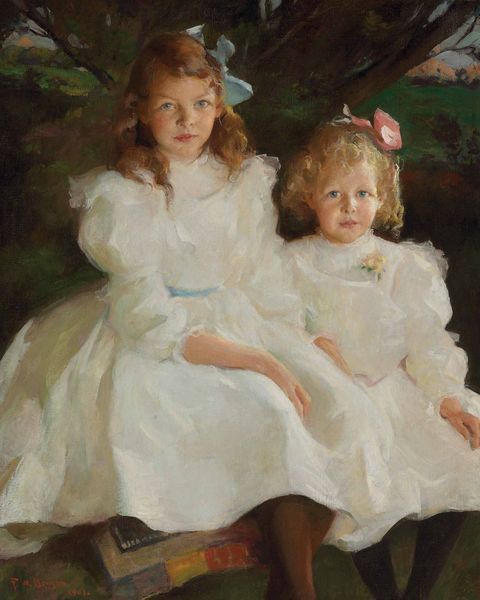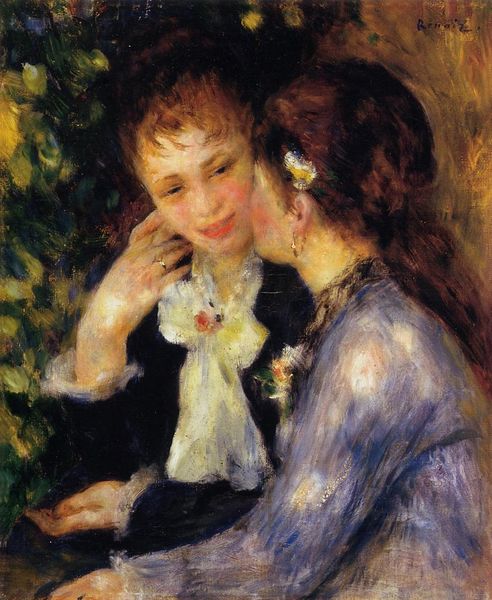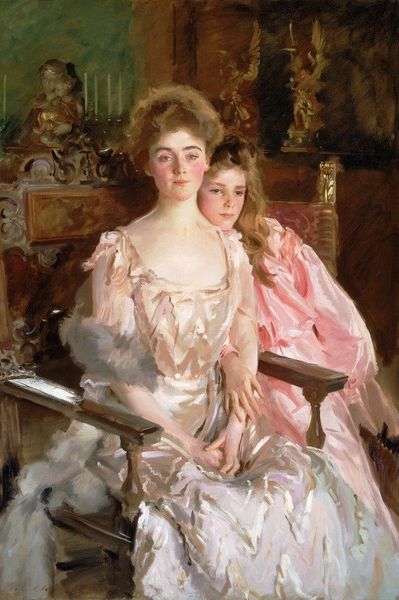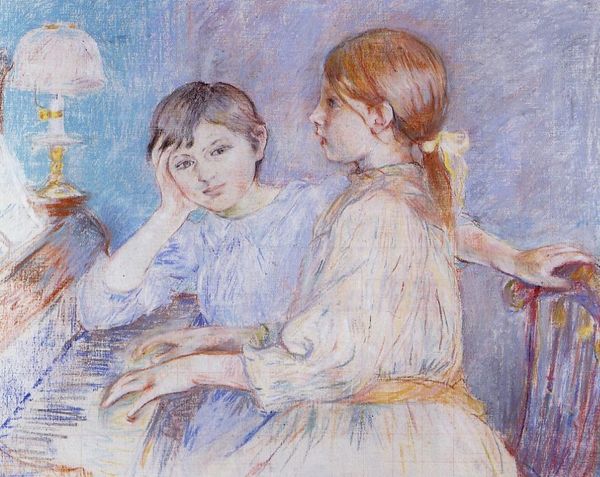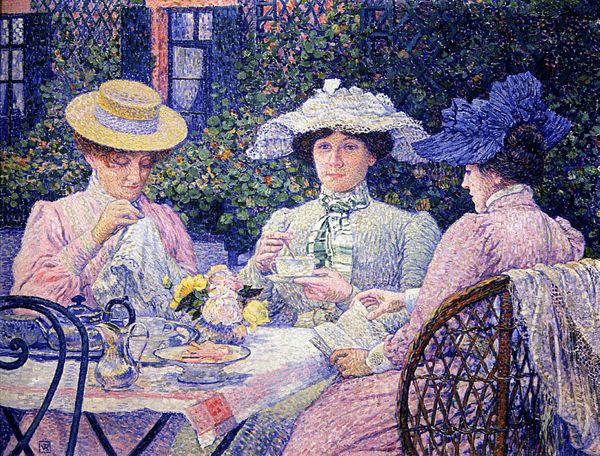
Dimensions: 76 x 64 cm
Copyright: Public domain
Editor: Here we have Théo van Rysselberghe’s “Portrait of Helene and Michette Guinotte,” created in 1901 using oil paint. The figures, two young girls in matching blue dresses, seem almost swallowed by the overall texture of the pointillist style. What’s your perspective on this piece? Curator: This portrait is fascinating when viewed through the lens of materials and production. Consider the sheer labor invested in creating this effect – each tiny daub of oil paint meticulously applied. How does that obsessive process reflect the societal value, or lack thereof, placed on artistic labor at the turn of the century? Editor: That’s an interesting point. It’s almost a repetitive, factory-like process in itself, which seems at odds with the intimate subject matter of a portrait. Curator: Exactly! The girls' dresses, though rendered in such a deliberate technique, speaks to the burgeoning textile industry. This isn’t just paint on canvas; it's a conversation about the consumption of goods, the rise of industry, and the role of women and children within that framework. How does the choice of portraying them in manufactured clothing affect our interpretation of their individual identities? Editor: It makes them seem almost like commodities themselves, or at least products of their time and social class. Curator: Precisely. Furthermore, examine the canvas itself, the pigments derived from the earth, refined and processed. Even the artist’s tools, brushes painstakingly crafted… they all contribute to the artwork’s meaning. The materiality insists that we examine the art’s construction and its wider economic significance. It’s about highlighting labor and the means of production, just as much as celebrating its subject. Editor: So it is not *just* a pretty portrait but also about industry, labor, and consumerism. Curator: In many ways, it reflects the artist's world and process within the frame itself, adding new meaning and insight into these materials that were deliberately considered in Rysselberghe's creative process. Editor: Thanks for your insight.
Comments
No comments
Be the first to comment and join the conversation on the ultimate creative platform.
